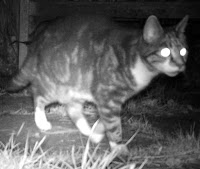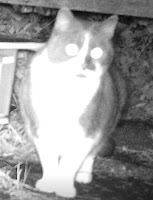(first posted 5th May, 2015)
It is by a long chalk the oldest thing I own apart from the worse-than-senseless blocks and stones in the garden - a 1668 Charles II silver shilling. It is quite worn and the King’s face is damaged but the images are clear. A cautious numismatist would probably describe it as being in F or ‘Fine’ condition, just short of VF or ‘Very Fine’.
The ‘head’ side or obverse is inscribed “CAROLUS II DEI GRATIA” – Charles II by the grace of God – which continues on the ‘tail’ side or reverse, “MAG BR FRA ET HIB REX” – King of Great Britain, France and Ireland. The claim to France was historical but one of the shields on the reverse still displays the fleur de lys, the emblem of the King of France. The other shields portray the three English lions passant (i.e. walking, some heraldrists hold them to be leopards), the Scottish lion rampant (i.e. standing) and the Hibernian (Irish) harp. I think the shilling is the variation known as ‘second bust’ but I have insufficient experience to be sure.
The coin was struck – literally because it is a hammered coin – almost three hundred and fifty years ago, which is so long ago it is hard to imagine. It is dated ten years after the death of Oliver Cromwell and a couple of years after the Great Fire of London. Pepys was writing his diary, John Dryden was Poet Laureate, and Isaac Newton was discovering the calculus or ‘fluxions’ and about to be appointed a Cambridge professor of mathematics. England would soon be at war with the Dutch.
I can tell you how I came by it. My dad swapped it for a pair of boots with a farming acquaintance who found it by chance at the side of a newly ploughed field, the exact location now unknown. It was rare chance because this was well before the days of metal detecting. By now the boots will have dulled and decayed, but the shilling still shines.
A collector wanting a similar example for his or her collection today would have to pay around a hundred and fifty pounds – it could be two or three times that without the damage to the face. I don’t really care. Why sell it?
But what was it worth in the seventeenth century? It depends how you estimate it. In terms of purchasing power it would be the equivalent of around just seven pounds fifty today, but in terms of what someone might earn it would be worth between one and two hundred pounds. It depends whether you use retail price inflation or earnings inflation.
I turn it in my fingers and wonder what other hands held it, and how many. Placing it in history is easy but we can never know who owned it, who it was passed on to, what it bought, who lost it, what its loss meant, how it was lost or for how long it lay in the Howdenshire field where it was re-discovered.
Could it have been lost in drunken reverie? Perhaps it was some unfortunate farm labourer’s wage for the day, or a ‘King’s shilling’ taken by someone newly enlisted in the army or navy. Or did it belong to someone for whom the loss might have been a little more bearable, accidently dropped perhaps by a rich landowner and his farm foreman while paying a group of workers?
Some things we can never know but one day there may be an answer my final question, “Where will it be in another three hundred and fifty years, in 2370?” That is a date that seems like science fiction.









